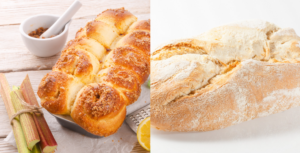The Ultimate Guide To Konjac Flour: What It Is, How It’s Made, And Why It’s So Popular!
What To Know
- Konjac flour is also a good source of glucomannan, a soluble fiber that has been shown to have a number of health benefits.
- Konjac flour is a versatile, low-carb, gluten-free flour alternative that can be used in a variety of recipes.
- It is a good source of dietary fiber and glucomannan, a soluble fiber that has been linked to a number of health benefits.
Konjac flour is a gluten-free, low-carb flour made from the konjac plant, a perennial herbaceous plant native to Southeast Asia. The flour is produced by grinding the konjac root into a fine powder. Konjac flour is a versatile ingredient that can be used in a variety of recipes, from noodles to baked goods.
Nutritional Profile
Konjac flour is incredibly low in calories and carbohydrates. A 100-gram serving of konjac flour contains only 4 calories and 1 gram of carbohydrates. It is also a good source of dietary fiber, providing 9 grams per 100-gram serving. Konjac flour is also a good source of glucomannan, a soluble fiber that has been shown to have a number of health benefits.
Health Benefits
Glucomannan, the soluble fiber found in konjac flour, has been linked to a number of health benefits, including:
- Weight loss: Glucomannan has been shown to promote weight loss by increasing satiety and reducing appetite.
- Improved blood sugar control: Glucomannan can help to slow the absorption of sugar into the bloodstream, which can help to improve blood sugar control.
- Reduced cholesterol levels: Glucomannan has been shown to reduce cholesterol levels by binding to cholesterol in the digestive tract and preventing it from being absorbed into the bloodstream.
- Improved digestive health: Glucomannan can help to improve digestive health by promoting regularity and reducing constipation.
Culinary Uses
Konjac flour is a versatile ingredient that can be used in a variety of recipes. It can be used to make noodles, pasta, bread, and baked goods. Konjac flour can also be used as a thickener for soups, sauces, and gravies.
How to Use Konjac Flour
When using konjac flour, it is important to note that it is a very absorbent flour. It is important to use less konjac flour than you would other types of flour. You may also need to add more liquid to your recipes when using konjac flour.
Konjac Flour Recipes
There are many delicious recipes that can be made with konjac flour. Here are a few of our favorites:
- Konjac flour noodles: These noodles are a low-carb, gluten-free alternative to traditional pasta noodles. They can be stir-fried, boiled, or added to soups.
- Konjac flour bread: This bread is a low-carb, gluten-free alternative to traditional bread. It is made with konjac flour, almond flour, and eggs.
- Konjac flour cookies: These cookies are a low-carb, gluten-free alternative to traditional cookies. They are made with konjac flour, almond flour, and sweetener.
Where to Buy Konjac Flour
Konjac flour is available at most health food stores and online retailers. It is typically sold in bags or boxes.
The Bottom Line
Konjac flour is a versatile, low-carb, gluten-free flour alternative that can be used in a variety of recipes. It is a good source of dietary fiber and glucomannan, a soluble fiber that has been linked to a number of health benefits.
Questions You May Have
Q: What is the difference between konjac flour and konjac powder?
A: Konjac flour is made from the whole konjac root, while konjac powder is made from the soluble fiber glucomannan. Konjac flour is a more versatile ingredient and can be used in a wider variety of recipes.
Q: Is konjac flour safe to eat?
A: Yes, konjac flour is safe to eat. It is a natural food product that has been consumed for centuries in Asia.
Q: How much konjac flour should I eat?
A: The recommended daily intake of konjac flour is 3-5 grams. It is important to start with a small amount and gradually increase your intake as tolerated.
